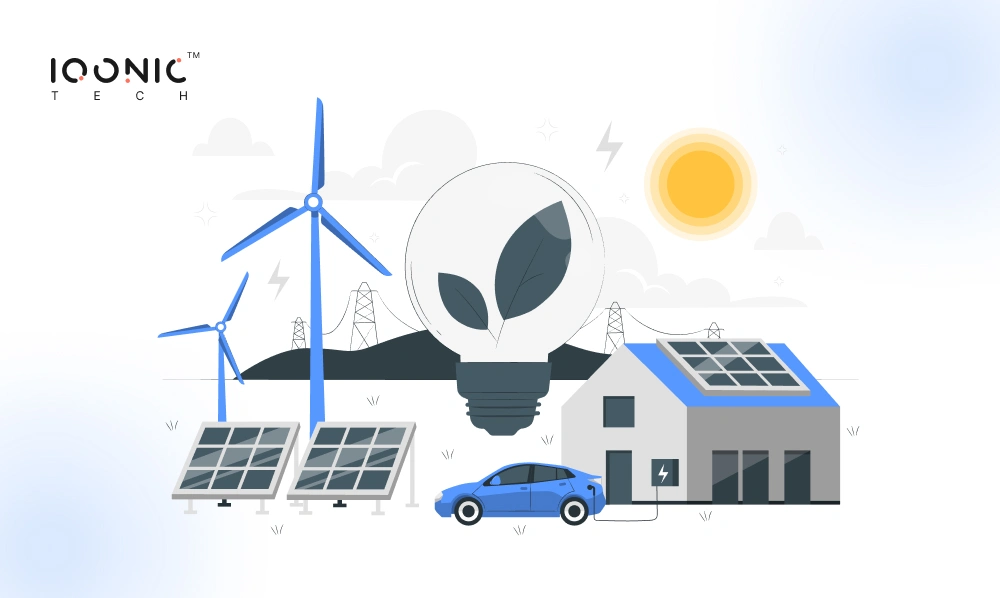Did you know that Northern Europe is leading the world in green energy initiatives? Countries like Sweden, Denmark, and Finland are making significant strides in renewable energy innovation. However, despite advancements in wind and solar energy production, certain challenges remain—inefficiencies in energy distribution, carbon credit fraud, and lack of transparency in energy trading.
This is where blockchain in green energy comes into play. With its core strengths in transparency, security, and decentralization, blockchain technology is emerging as a game-changer. In this article, we’ll explore why blockchain in green energy is crucial for Northern Europe’s development, examine real-world applications, and look ahead to future trends.
Understanding Blockchain in Green Energy

Blockchain in green energy refers to the application of decentralized ledger technology to record, verify, and optimize energy-related transactions. It provides a transparent and tamper-proof system for tracking energy production, distribution, and consumption—without intermediaries.
In practical terms, blockchain enhances the credibility of renewable energy by ensuring seamless verification of carbon credits, establishing smart contracts for automated peer-to-peer energy trading, and providing a tamper-proof system for tracking power consumption.
For a region like Northern Europe—where renewables make up a large portion of the energy mix—blockchain in green energy provides innovative tools to optimize operations and eliminate inefficiencies.
Real-World Applications of Blockchain in Green Energy
1. Peer-to-Peer Energy Trading
One of the most promising applications of blockchain in green energy is enabling peer-to-peer energy trading. This allows prosumers—individuals or businesses that both produce and consume energy—to trade surplus power with others directly.
For example, Power Ledger, an Australian-based blockchain company, has successfully implemented peer-to-peer energy trading in parts of Europe. By reducing intermediaries, such solutions lower costs for consumers and provide better incentives for renewable energy production.
2. Secure Carbon Credit and Renewable Energy Certificates (RECs)
One challenge in the renewable energy industry is verifying the authenticity of carbon credits and RECs. Blockchain offers a transparent and unalterable ledger where these credits can be recorded and traced back to legitimate renewable energy sources, ensuring trust in the trading system.
The Energy Web Foundation (EWF) has deployed blockchain-based solutions to track green energy certificates, making the verification of sustainability claims easier and more reliable. This initiative has been particularly relevant in European countries aiming for carbon neutrality.
3. Improved Grid Management and Demand Response
Blockchain supports the automation of grid management by providing real-time insights into energy usage and demand fluctuations. With smart contracts, energy providers can incentivize consumers to reduce consumption during peak hours, stabilizing supply and minimizing energy wastage.
For instance, the Brooklyn Microgrid project in the U.S. offers an example of blockchain-driven decentralized grid management, which can inspire similar models in Northern Europe’s renewable energy sector.
Key Challenges in Blockchain Adoption for Green Energy
Despite the promise of blockchain in green energy, several challenges still hinder widespread adoption:
1. Regulatory Uncertainty
The energy sector is highly regulated, and blockchain’s decentralized nature poses challenges in compliance with existing laws. Governments need to establish clear policies to address blockchain-based energy trading, smart contract enforceability, and data privacy.
2. Scalability Issues
While effective at small scales, blockchain in green energy needs further development to support large-scale grid applications. Speed, transaction volume, and energy usage of some blockchain platforms can become bottlenecks.
3. Cost Considerations
Developing and maintaining blockchain systems require investment in infrastructure, software, and expertise. Many energy firms, especially smaller companies, might find the initial costs prohibitive despite long-term benefits.
How to Overcome These Challenges
To fully integrate blockchain into the green energy sector, stakeholders must take proactive measures:
- Governments and regulatory bodies should create frameworks that encourage blockchain adoption while ensuring compliance.
- Innovations such as layer-two scaling solutions and energy-efficient blockchains (like proof-of-stake models) should be explored to address scalability concerns.
- Public-private collaborations can help fund blockchain projects and share the cost burden, ensuring successful deployment.
Future Trends in Blockchain and Green Energy
Northern Europe continues to pioneer green innovation, and blockchain in green energy is poised to play a bigger role. Here are some emerging trends:
1. Increased Adoption of Decentralized Energy Grids
With growing energy decentralization, blockchain will facilitate localized energy grids where communities manage their own energy production and distribution efficiently.
2. Integration of AI and IoT for Smart Grid Optimization
Combining blockchain with artificial intelligence (AI) and the Internet of Things (IoT) will further enhance grid management by providing predictive analytics, automated trading decisions, and enhanced security.
3. Cross-Border Energy Trading with Blockchain
As European countries continue interlinked green energy initiatives, blockchain will enable more efficient and transparent cross-border electricity trading, reducing reliance on fossil-fuel-based backup power sources.
Additional Resources
Want to dive deeper into blockchain in green energy? Check out these valuable resources:
Energy Web Foundation (EWF) – A non-profit developing blockchain solutions for the energy sector.
Power Ledger Whitepaper – A detailed look at blockchain-based P2P energy trading.
– EU Energy Policy Reports – Insights into European regulations on renewable energy and blockchain adoption.
Conclusion
Blockchain in green energy holds the potential to transform how Northern Europe approaches sustainability. From decentralized energy trading to transparent carbon tracking, blockchain removes inefficiencies and builds trust in the renewable sector.
While regulatory, technical, and financial challenges remain, collaboration between governments, tech innovators, and energy providers can drive adoption forward. By embracing blockchain in green energy, Northern Europe can continue to lead the world toward a cleaner, smarter, and more sustainable future.
By embracing blockchain technology, Northern Europe can further solidify its position as a global leader in renewable energy while driving the world towards a more sustainable future.






